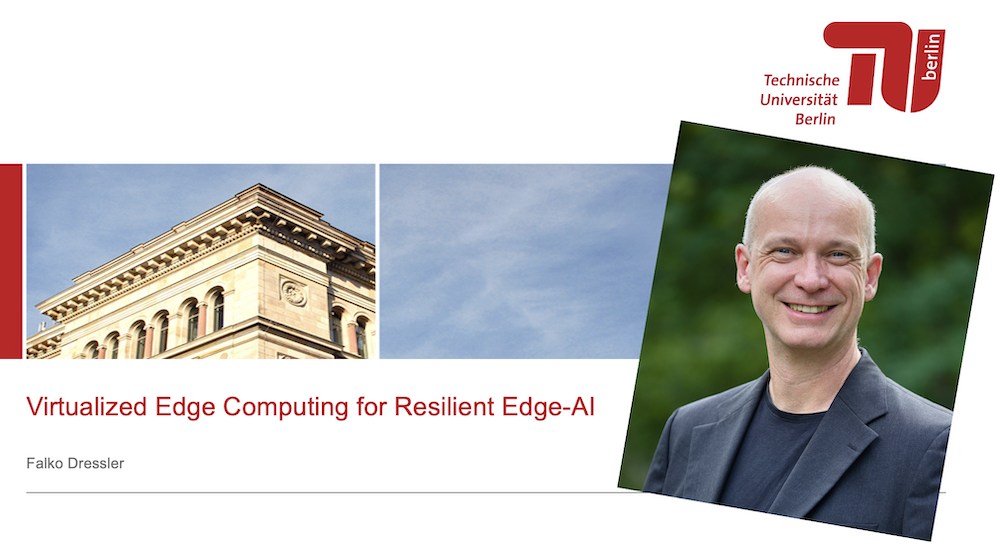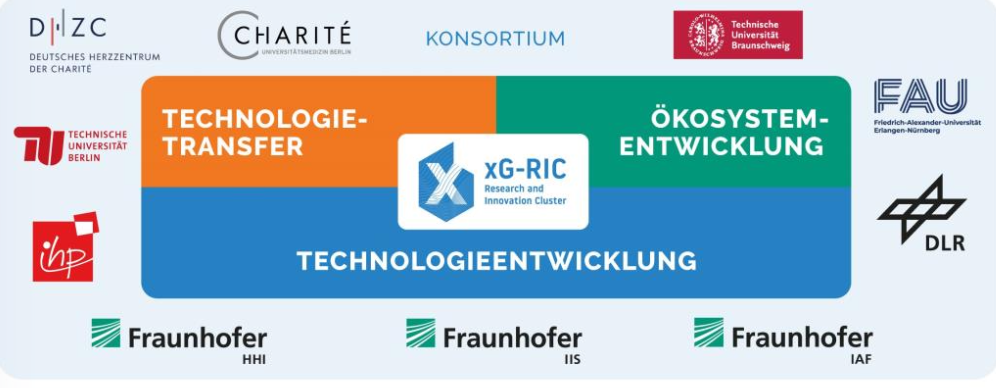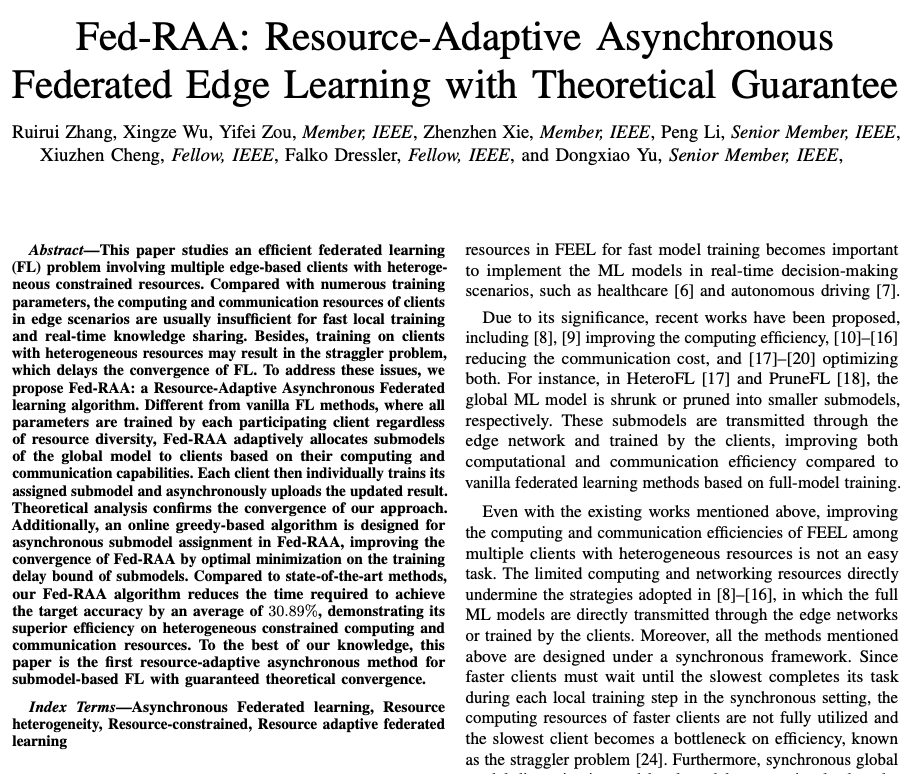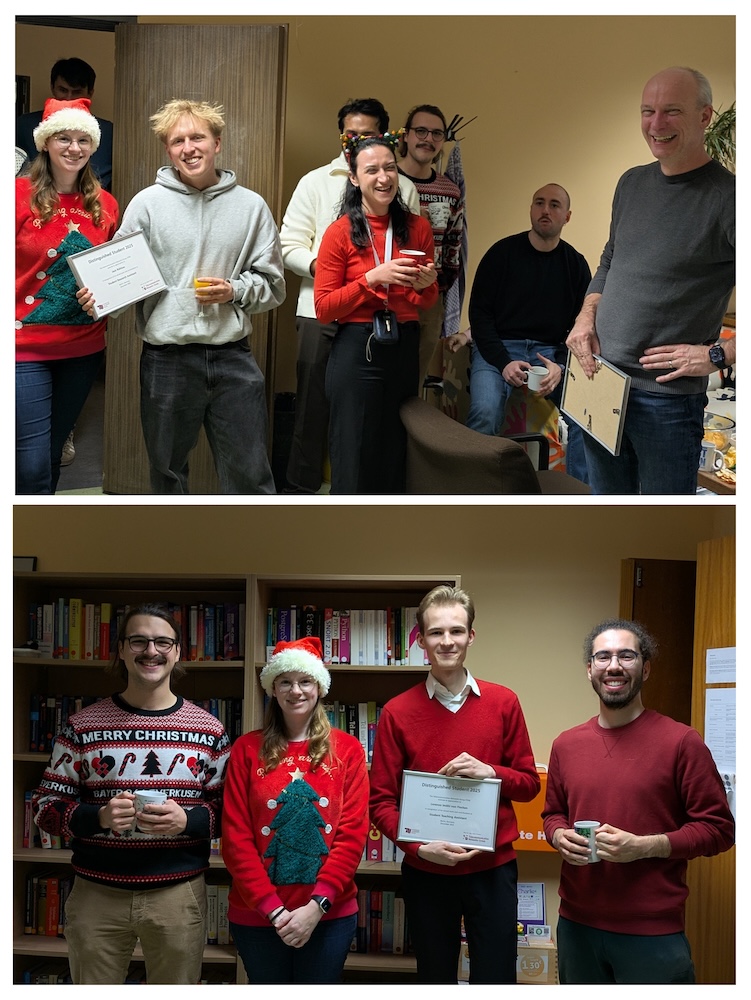News and Announcements

Redundancy in WiFi 7: Combining Multi-link Operation with IEEE 802.1CB FRER
December 06, 2025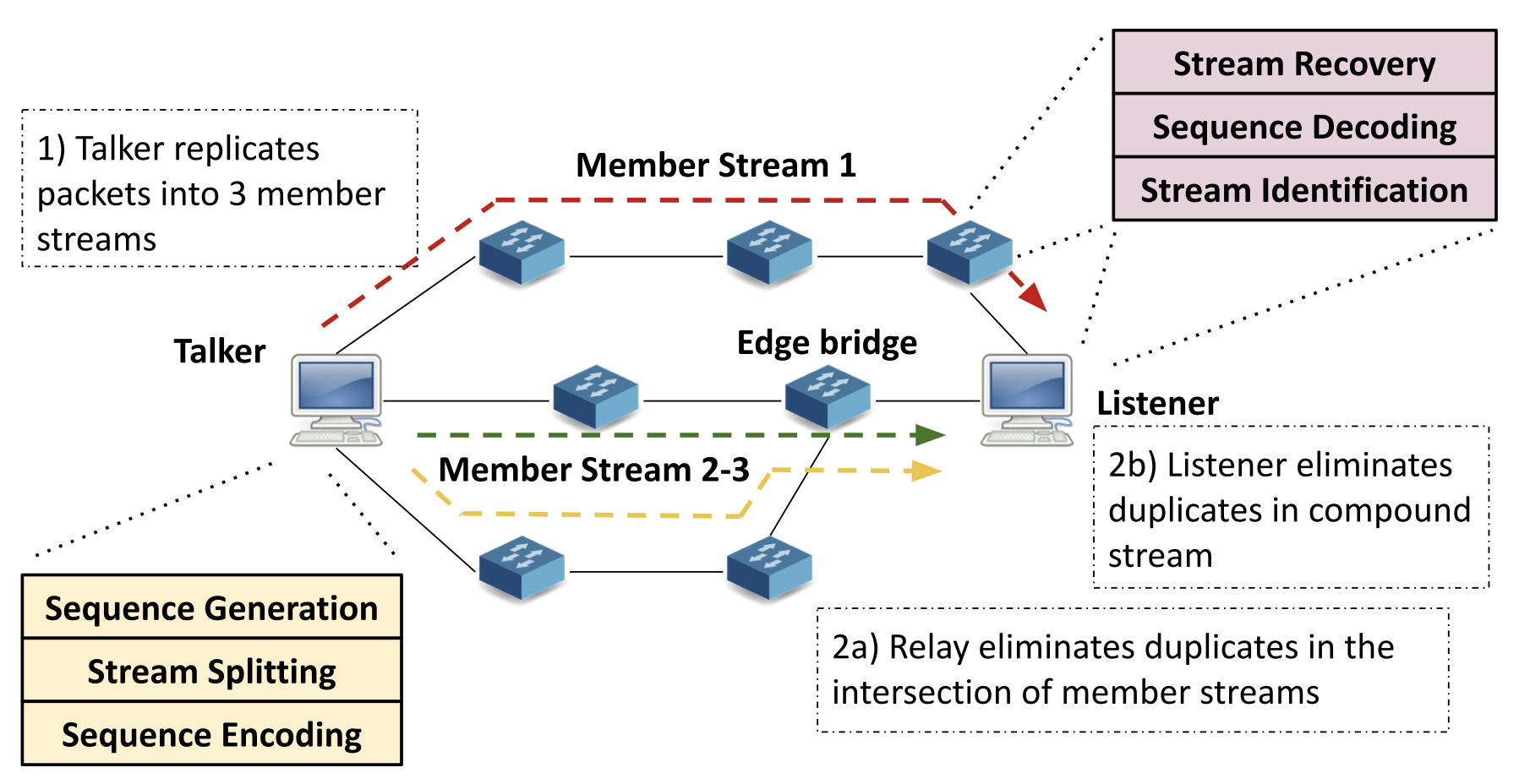
The increasing complexity of modern industrial and manufacturing systems, featuring numerous sensors and mobile components, demands reliable, low-latency communication over wireless networks. WiFi 7 addresses these requirements through enhancements such as Multi-Link Operation (MLO), enabling simultaneous use of multiple frequency bands and offering inherent link diversity. This raises the question of whether MLO can be effectively leveraged for reliability in critical systems. In this paper, we explore the integration of IEEE 802.1CB Frame Replication and Elimination for Reliability (FRER), a core Time-Sensitive Networking (TSN) standard, over MLO to address this question. We present an open-source implementation of FRER over MLO in the OMNeT++ simulator, highlight key challenges in combining these technologies, and evaluate its effectiveness in improving reliability under wireless-specific conditions such as mobility and congestion. Our results demonstrate that FRER can enhance packet delivery ratio and ensure bounded latency, albeit at the expense of reduced channel efficiency due to redundancy. Doğanalp Ergenç, Tobias Reisinger and Falko Dressler, "Redundancy in WiFi 7: Combining Multi-link Operation with IEEE 802.1CB FRER," Elsevier Computer Communications, vol. 247, February 2026.
[DOI, BibTeX, PDF, More details]
Doğanalp Ergenç, Tobias Reisinger and Falko Dressler, "Redundancy in WiFi 7: Combining Multi-link Operation with IEEE 802.1CB FRER," Elsevier Computer Communications, vol. 247, February 2026.
[DOI, BibTeX, PDF, More details]
Operator Coexistence in IRS-Assisted mmWave Networks: A Wideband Approach
November 09, 2025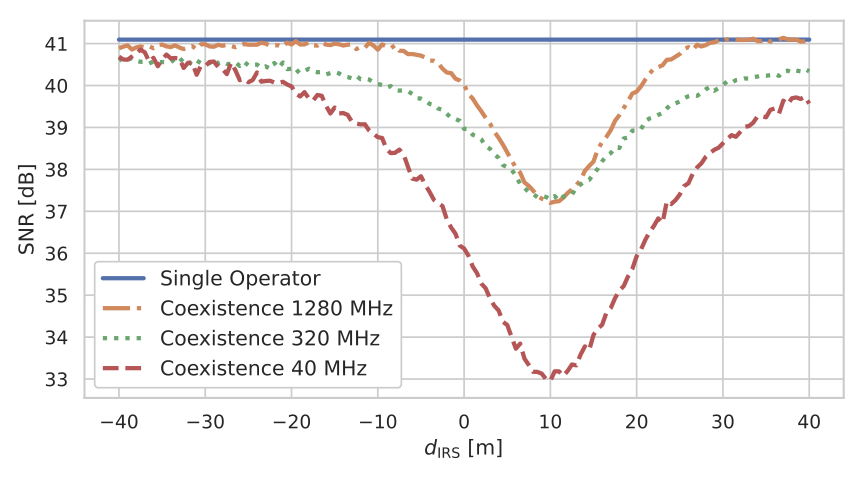
There are multiple challenges associated with IRS, which have to be addressed before full incorporation of this technology into existing networks. A key issue arises from the inability of IRS to filter out non-target signals from other frequency bands due to lack of bandpass filtering. In areas where multiple wireless operators are spatially nearby, even if they use different frequency bands, this may cause unwanted reflections that may degrade their communication performances. To address this challenge, we previously proposed a solution, which relied on partitioning an IRS into sub-surfaces (sub_IRS) and dynamically assigning operators to these sub_IRS. Results have shown that a proper assignment of wireless operators to sub_IRS can improve the overall performance compared to a random assignment. In this paper, we introduce a wideband approach, demonstrating that the impact from unwanted reflections can be mitigated by using wideband channels, as the average signal to noise ratio (SNR) across subcarriers is less adversely affected. This approach leverages frequency diversity to reduce SNR variance, as some of the subcarriers may be negatively affected while others benefit, resulting in maintaining a more consistent and robust system performance in the presence of IRS-induced unwanted reflections. Joana Angjo, Anatolij Zubow and Falko Dressler, "Operator Coexistence in IRS-Assisted mmWave Networks: A Wideband Approach," Elsevier Computer Communications, vol. 244, pp. 108341, December 2025.
[DOI, BibTeX, PDF, More details]
Joana Angjo, Anatolij Zubow and Falko Dressler, "Operator Coexistence in IRS-Assisted mmWave Networks: A Wideband Approach," Elsevier Computer Communications, vol. 244, pp. 108341, December 2025.
[DOI, BibTeX, PDF, More details]
Reconsidering Sparse Sensing Techniques for Channel Sounding using Splicing
October 20, 2025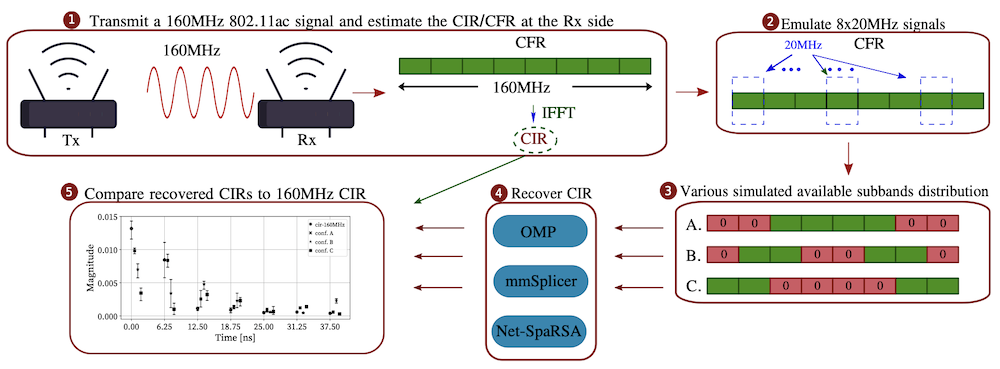
Multi-band splicing offers a promising solution to extend existing band-limited communication systems to support high-precision sensing applications. This technique involves performing narrow-band measurements at multiple center frequencies, which are then combined to effectively increase the bandwidth without changing the sampling rate. In this paper, we introduce a mmWave channel sounder based on multi-band splicing, leveraging the sparse nature of wireless channels through compressed sensing and sparse recovery techniques for channel reconstruction. We focus on three sparse recovery methods: the widely used grid-based orthogonal matching pursuit (OMP) algorithm as a baseline, our newly developed two-stage mmSplicer algorithm, which extends the OMP method by introducing an additional stage for improving its performance for our application, and our adaptation of sparse reconstruction by separable approximation (SpaRSA), named Net-SpaRSA, optimized for wireless applications. All three algorithms are integrated into an experimental OFDM-based IEEE 802.11ac system. Our analysis centers on evaluating the performance of these algorithms under limited number of narrow-band measurements, demonstrating that accurate CIR estimation is achievable even using only 50% of the full wideband spectrum. Additionally, we analyze and compare the computational complexity of these algorithms to assess their practical feasibility. Sigrid Dimce, Anatolij Zubow, Alireza Bayesteh, Giuseppe Caire and Falko Dressler, "Reconsidering Sparse Sensing Techniques for Channel Sounding using Splicing," IEEE Transactions on Mobile Computing, vol. 24 (11), pp. 11511–11526, November 2025.
[DOI, BibTeX, PDF, More details]
Sigrid Dimce, Anatolij Zubow, Alireza Bayesteh, Giuseppe Caire and Falko Dressler, "Reconsidering Sparse Sensing Techniques for Channel Sounding using Splicing," IEEE Transactions on Mobile Computing, vol. 24 (11), pp. 11511–11526, November 2025.
[DOI, BibTeX, PDF, More details]
Exhaled Breath Analysis Through the Lens of Molecular Communication: A Survey
September 20, 2025
Molecular Communication (MC) has long been envisioned to enable an Internet of Bio-Nano Things (IoBNT) with medical applications, where nanomachines within the human body conduct monitoring, diagnosis, and therapy at micro- and nanoscale levels. MC involves information transfer via molecules and is supported by well-established theoretical models. However, practically achieving reliable, energy-efficient, and bio-compatible communication at these scales still remains a challenge. Air-Based Molecular Communication (ABMC) is a type of MC that operates over larger, meter-scale distances and extends even outside the human body. Therefore, devices and techniques to realize ABMC are readily accessible, and associated use cases can be very promising in the near future. Exhaled breath analysis has previously been proposed. It provides a non-invasive approach for health monitoring, leveraging existing commercial sensor technologies and reducing deployment barriers. The breath contains a diverse range of molecules and particles that serve as biomarkers linked to various physiological and pathological conditions. The plethora of proven methods, models, and optimization approaches in MC enable macroscale breath analysis, treating humans as the transmitter, the breath as the information carrier, and macroscale sensors as the receiver. Using ABMC to interface with the inherent dynamic networks of cells, tissues, and organs could create a novel Internet of Bio Things (IoBT), a preliminary macroscale stage of the IoBNT. This survey extensively reviews exhaled breath modeling and analysis through the lens of MC, offering insights into theoretical frameworks and practical implementations from ABMC, bringing the IoBT a step closer to real-world use. Sunasheer Bhattacharjee, Dadi Bi, Pit Hofmann, Alexander Wietfeld, Sophie Becke, Michael Lommel, Pengjie Zhou, Ruifeng Zheng, Ulrich Kertzscher, Yansha Deng, Wolfgang Kellerer, Frank H. P. Fitzek and Falko Dressler, "Exhaled Breath Analysis Through the Lens of Molecular Communication: A Survey," IEEE Communications Surveys & Tutorials, vol. 28, pp. 412–445, September 2025.
[DOI, BibTeX, PDF, More details]
Sunasheer Bhattacharjee, Dadi Bi, Pit Hofmann, Alexander Wietfeld, Sophie Becke, Michael Lommel, Pengjie Zhou, Ruifeng Zheng, Ulrich Kertzscher, Yansha Deng, Wolfgang Kellerer, Frank H. P. Fitzek and Falko Dressler, "Exhaled Breath Analysis Through the Lens of Molecular Communication: A Survey," IEEE Communications Surveys & Tutorials, vol. 28, pp. 412–445, September 2025.
[DOI, BibTeX, PDF, More details]
Jamming-Resilient Physical-to-Virtual Communications in Digital Twin Edge Networks
August 31, 2025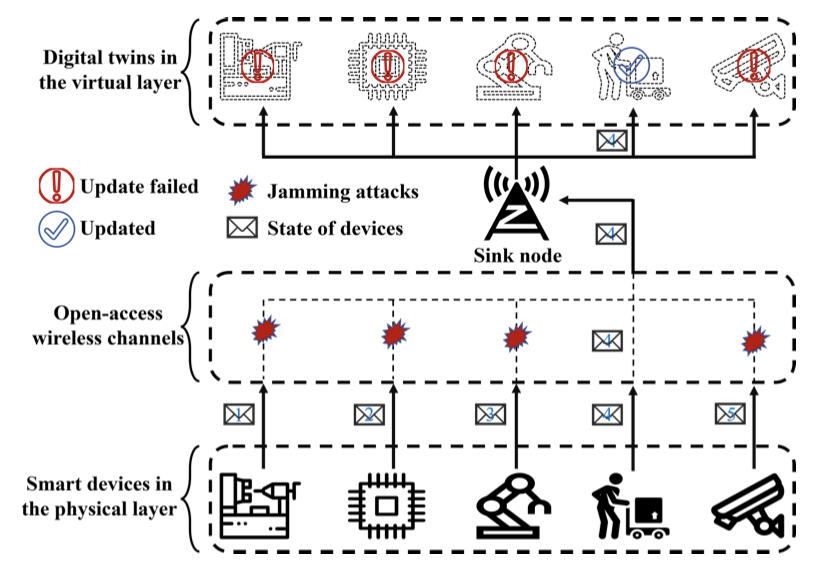
As an integration of digital twin and edge computing, the digital twin edge networks (DITENs) have been proposed in recent years to fill the gap between physical edge networks and digital systems. Meanwhile, the multi-access wireless environments in edge computing make it hard to provide ultra-reliable and low-latency communications for digital twin, especially when the jamming attacks can be launched by the adversaries. This paper studies the jamming-resilient physical-to-virtual communication (PTVC) problem in DITENs despite strong cooperative jamming. Note that the previous jamming models mainly focus on the jamming behaviors from an individual adversary and are restricted by the energy budget limitation and uniform jamming assumption. In this paper, we consider a more comprehensive jamming model, in which f adversaries can cooperatively launch their jamming attacks in totally kwireless channels with unlimited power budget and non-uniform jamming signals. Then, based on the new proposed (k,f)-cooperative jamming model, we show that k>f is the necessary and also sufficient condition to solve the PTVC problem. On one hand, we prove that the PTVC problem is insoluble when f≤k; on the other hand, two distributed algorithms are given as the solutions of the PTVC problem among nphysical objectives and one sink node when k>f, the time complexity of which are O(nlog n k(log k−log f) ) and O(nlog n log k−log f) based on the communication modes with/without acknowledgement, respectively. Both of the theoretical results and empirical simulations are conducted to show the resilience of our algorithms despite such a strong cooperative jamming model. Li Yang, Yifei Zou, Zuyuan Zhang, Peng Wang, Dongxiao Yu, Anatolij Zubow, Falko Dressler and Xiuzhen Cheng, "Jamming-Resilient Physical-to-Virtual Communications in Digital Twin Edge Networks," IEEE Transactions on Networking, vol. 33 (4), pp. 1731 – 1745, August 2025.
[DOI, BibTeX, PDF, More details]
Li Yang, Yifei Zou, Zuyuan Zhang, Peng Wang, Dongxiao Yu, Anatolij Zubow, Falko Dressler and Xiuzhen Cheng, "Jamming-Resilient Physical-to-Virtual Communications in Digital Twin Edge Networks," IEEE Transactions on Networking, vol. 33 (4), pp. 1731 – 1745, August 2025.
[DOI, BibTeX, PDF, More details]
Coordinated Spatial Reuse Scheduling With Machine Learning in IEEE 802.11 MAPC Networks
July 04, 2025
The densification of Wi-Fi deployments means that fully distributed random channel access is no longer sufficient for high and predictable performance. Therefore, the upcoming IEEE 802.11bn amendment introduces multi-access point coordination (MAPC) methods. This paper addresses a variant of MAPC called coordinated spatial reuse (C-SR), where devices transmit simultaneously on the same channel, with the power adjusted to minimize interference. The C-SR scheduling problem is selecting which devices transmit concurrently and with what settings. We provide a theoretical upper bound model, optimized for either throughput or fairness, which finds the best possible transmission schedule using mixed-integer linear programming. Then, a practical, probing-based approach is proposed which uses multi-armed bandits (MABs), a type of reinforcement learning, to solve the C-SR scheduling problem. We validate both classical (flat) MAB and hierarchical MAB (H-MAB) schemes with simulations and in a testbed. Using H-MABs for C-SR improves aggregate throughput over legacy IEEE 802.11 (on average by 80% in random scenarios), without reducing the number of transmission opportunities per station. Maksymilian Wojnar, Wojciech Ciezobka, Artur Tomaszewski, Piotr Chołda, Krzysztof Rusek, Katarzyna Kosek-Szott, Jetmir Haxhibeqiri, Jeroen Hoebeke, Boris Bellalta, Anatolij Zubow, Falko Dressler and Szymon Szott, "Coordinated Spatial Reuse Scheduling With Machine Learning in IEEE 802.11 MAPC Networks," IEEE Journal on Selected Areas in Communications, vol. 43 (11), pp. 3666–3682, November 2025.
[DOI, BibTeX, PDF, More details]
Maksymilian Wojnar, Wojciech Ciezobka, Artur Tomaszewski, Piotr Chołda, Krzysztof Rusek, Katarzyna Kosek-Szott, Jetmir Haxhibeqiri, Jeroen Hoebeke, Boris Bellalta, Anatolij Zubow, Falko Dressler and Szymon Szott, "Coordinated Spatial Reuse Scheduling With Machine Learning in IEEE 802.11 MAPC Networks," IEEE Journal on Selected Areas in Communications, vol. 43 (11), pp. 3666–3682, November 2025.
[DOI, BibTeX, PDF, More details]
Incentive-based Platoon Formation: Optimizing the Personal Benefit for Drivers
June 23, 2025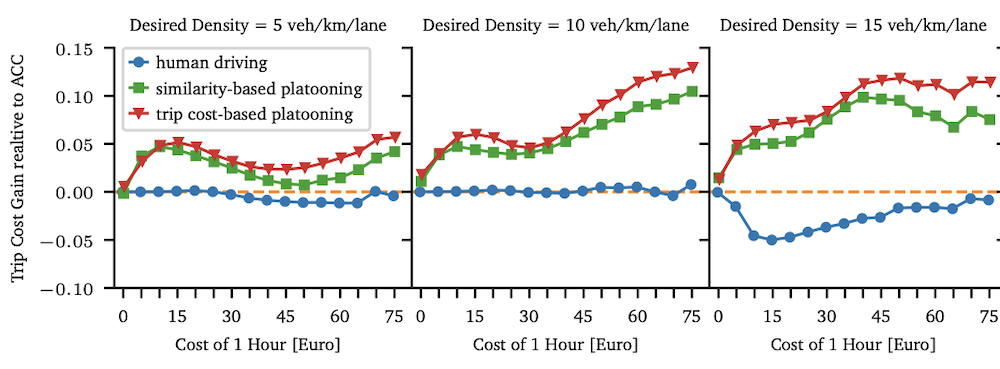
Platooning or cooperative adaptive cruise control (CACC) has been investigated for decades, but debate about its lasting impact is still ongoing. While the benefits of platooning and the formation of platoons are well understood for trucks, they are less clear for passenger cars, which have a higher heterogeneity in trips and drivers' preferences. Most importantly, it remains unclear how to form platoons of passenger cars in order to optimize the personal benefit for the individual driver. To this end, in this paper, we propose a novel platoon formation algorithm that optimizes the personal benefit for drivers of individual passenger cars. For computing vehicle-to-platoon assignments, the algorithm utilizes a new metric that we propose to evaluate the personal benefits of various driving systems, including platooning. By combining fuel and travel time costs into a single monetary value, drivers can estimate overall trip costs according to a personal monetary value for time spent. This provides an intuitive way for drivers to understand and compare the benefits of driving systems like human driving, adaptive cruise control (ACC), and, of course, platooning. Julian Heinovski, Doğanalp Ergenç, Kirsten Thommes and Falko Dressler, "Incentive-based Platoon Formation: Optimizing the Personal Benefit for Drivers," IEEE Open Journal of Intelligent Transportation Systems, vol. 6, pp. 813–831, June 2025.
[DOI, BibTeX, PDF, More details]
Julian Heinovski, Doğanalp Ergenç, Kirsten Thommes and Falko Dressler, "Incentive-based Platoon Formation: Optimizing the Personal Benefit for Drivers," IEEE Open Journal of Intelligent Transportation Systems, vol. 6, pp. 813–831, June 2025.
[DOI, BibTeX, PDF, More details]
Resilience in Edge Computing: Challenges and Concepts
May 28, 2025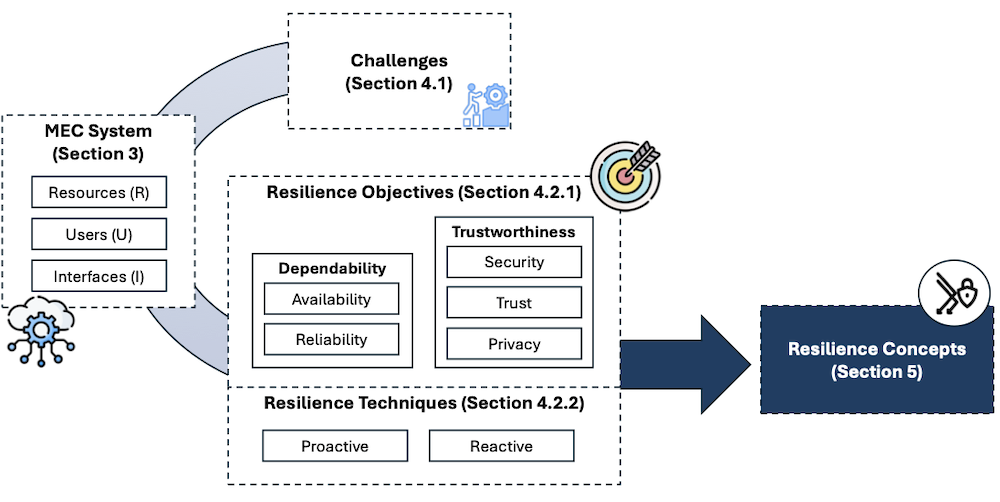
Motivated by the cloud-edge-continuum that is the basis for next-generation metaverse applications, the need for low-latency solutions, distributed computing is now receiving even more attention. The last road blocker for the wide use of (virtualized) edge computing for mission-critical applications is resilience. In this context, resilience is the ability of modern communication and computation systems to deal with unknown and unforeseen events, both from internal and external sources. Thus, making MEC resilient to outages (e.g., system failures or energy outages due to natural disasters), security incidents (e.g., the use of intelligent jamming or malicious users), and overall challenging conditions (e.g., high mobility or impaired connectivity) is of the highest importance. In this article, we review the current state of the art of resilience in mobile edge computing. We explore MEC-specific challenges and resilience objectives, and discuss selected resilience measures. Doğanalp Ergenç, Agon Memedi, Mathias Fischer and Falko Dressler, "Resilience in Edge Computing: Challenges and Concepts," Foundations and Trends® in Networking, vol. 14 (4), pp. 254–340, May 2025.
[DOI, BibTeX, PDF, More details]
Doğanalp Ergenç, Agon Memedi, Mathias Fischer and Falko Dressler, "Resilience in Edge Computing: Challenges and Concepts," Foundations and Trends® in Networking, vol. 14 (4), pp. 254–340, May 2025.
[DOI, BibTeX, PDF, More details]
Stable Age of Information Scheduling with NOMA in Edge Networks
April 30, 2025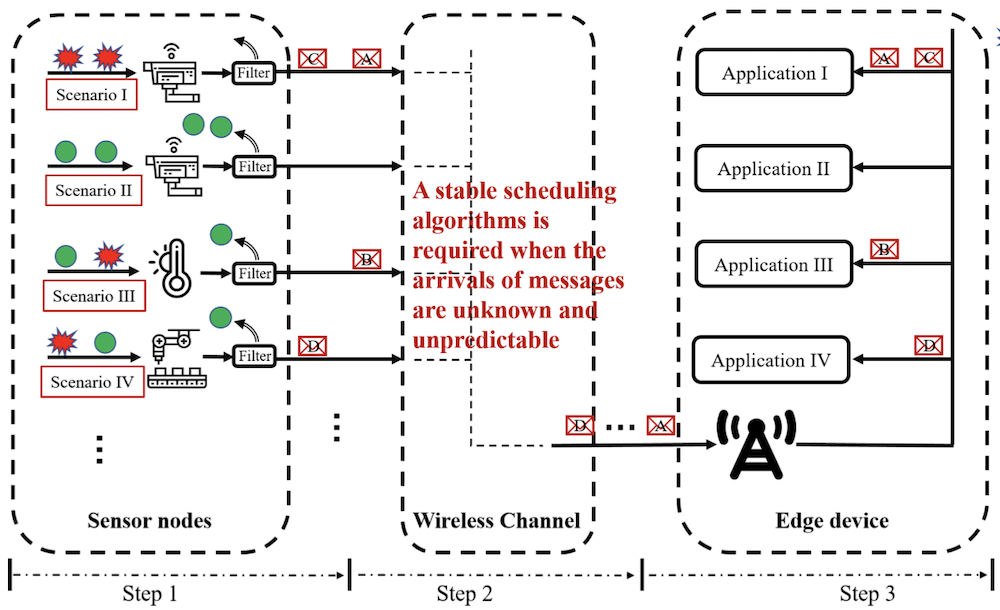
In this paper, we study a stable Age-of-Information (AoI) scheduling problem to handle the massive packet aggregation from arbitrary total of n end devices (sensor nodes) to an edge device via a single hop wireless channel when information constantly arrives at the end side. Specifically, we consider the arrivals of the information with an online injection mode, i.e., information is injected to end devices with an unknown injection rate in each time slot. After the information is injected, the AoI with respect to those end devices constantly increases until their fresh messages are received by the edge device, which characterizes the freshness of the information at destination. Based on the online injection mode, we propose the first distributed stable AoI scheduling algorithm combining NOMA (Non-Orthogonal Multiple-Access) technique in this paper, to minimize the expected average peak AoI (EAP-AoI) of our end-to-edge information system. Adopting NOMA technique updates k messages decoded from a mixed signal by the edge device in our algorithm, with parameter k > 1. Yifei Zou, Peng Wang, Shikun Shen, Dongxiao Yu, Jorge Torres Gómez, Falko Dressler and Xiuzhen Cheng, "Stable Age of Information Scheduling with NOMA in Edge Networks," IEEE Transactions on Networking, vol. 33 (5), pp. 2192–2207, October 2025.
[DOI, BibTeX, PDF, More details]
Yifei Zou, Peng Wang, Shikun Shen, Dongxiao Yu, Jorge Torres Gómez, Falko Dressler and Xiuzhen Cheng, "Stable Age of Information Scheduling with NOMA in Edge Networks," IEEE Transactions on Networking, vol. 33 (5), pp. 2192–2207, October 2025.
[DOI, BibTeX, PDF, More details]
XAInomaly: Explainable and Interpretable Deep Contractive Autoencoder for O-RAN Traffic Anomaly Detection
March 20, 2025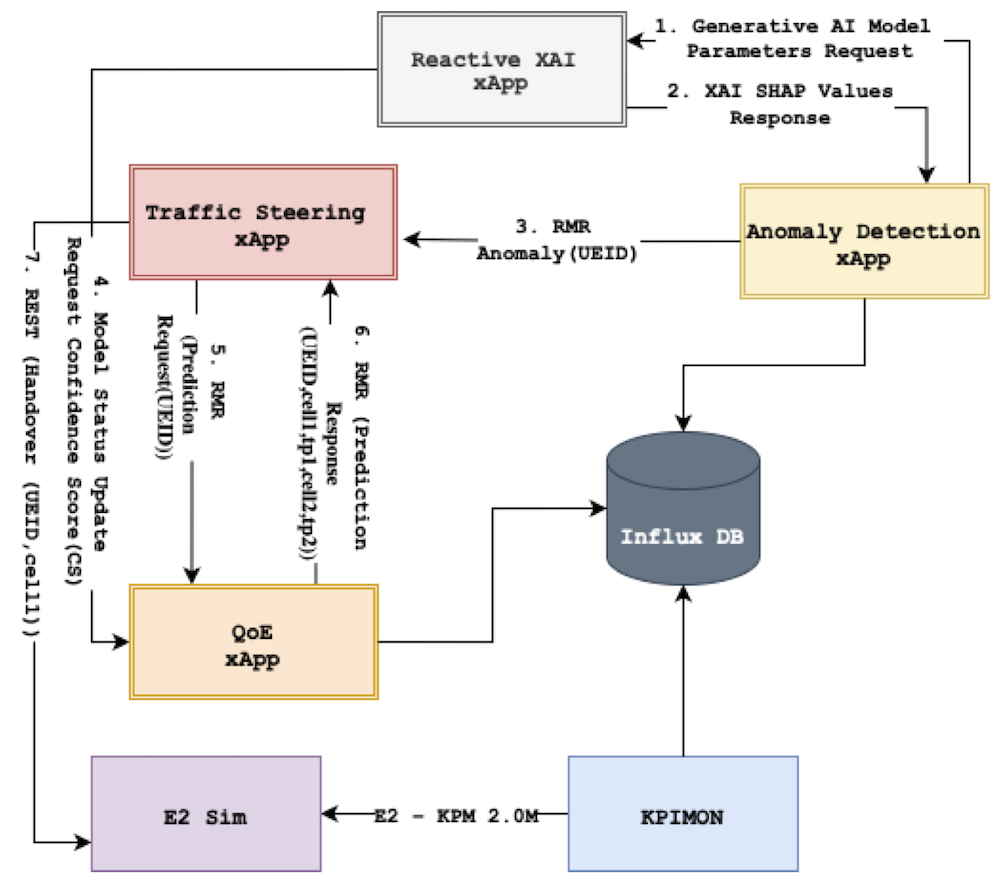
In this study, we introduce the XAInomaly framework, an explainable and interpretable Semi-supervised (SS) Deep Contractive Autoencoder (DeepCAE) design for anomaly detection in O-RAN. Our approach leverages the generative modeling capabilities of our SS-DeepCAE model to learn compressed, robust representations of normal network behavior, which captures essential features, enabling the identification of deviations indicative of anomalies. To address the black-box nature of deep learning models, we propose reactive Explainable AI (XAI) technique called fastshap-C, which is providing transparency into the model's decision-making process and highlighting the features contributing to anomaly detection. Osman Tugay Basaran and Falko Dressler, "XAInomaly: Explainable and Interpretable Deep Contractive Autoencoder for O-RAN Traffic Anomaly Detection," Elsevier Computer Networks, vol. 261, pp. 111145, April 2025.
[DOI, BibTeX, PDF, More details]
Osman Tugay Basaran and Falko Dressler, "XAInomaly: Explainable and Interpretable Deep Contractive Autoencoder for O-RAN Traffic Anomaly Detection," Elsevier Computer Networks, vol. 261, pp. 111145, April 2025.
[DOI, BibTeX, PDF, More details]
Empowering Smart Factories with O-RAN
February 12, 2025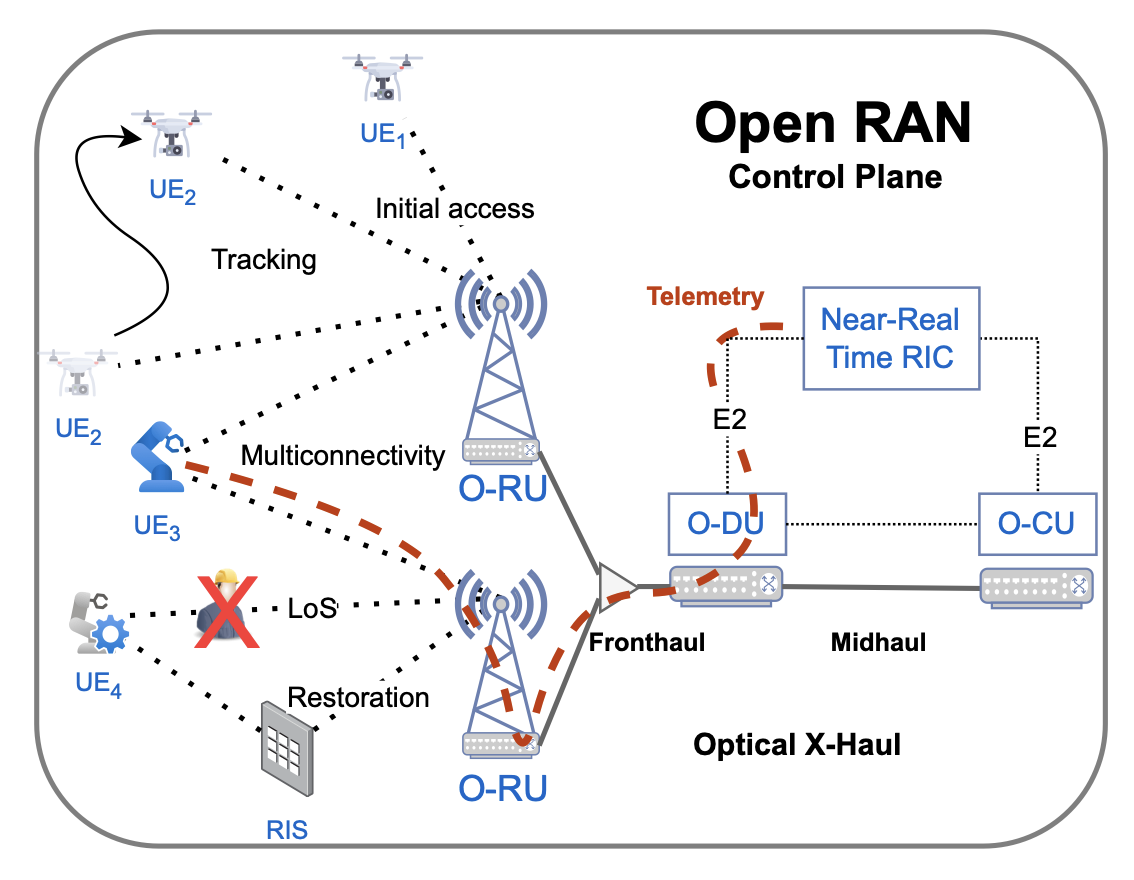
It is envisioned that 6G mobile networks will en hance and majorly empower the Industry 4.0 paradigm, evolving towards smart factories with optimized and customized services. Especially the smart factory scenario with real-time and high-capacity data communication presents us with new challenges, both in communications (mmW/sub-THz) and networking. This article discusses these new challenges and proposes extensions to the current Open Radio Access Network (O-RAN) standards for 6G networks to enable further evolution of Industry 4.0 and beyond. We motivate the need for real-time functionalities in O-RAN and an extended interface to the user equipment (UE) to allow for its fine-grained control. André Costa Drummond, Osman Tugay Basaran, Abhishek Dandekar, Max Franke, Mihail Balanici, Iulisloi Zacarias, Ítalo Brasileiro, Cao Vien Phung, Ehsan Tohidi, Naveed Kaim Khani, Sepideh Kouhini, Lorenzo Miretti, Zoran Utkovski, Emre Durmaz, Julius Schulz-Zander, Setareh Maghsudi, Stefan Schmid, Falko Dressler, Behnam Shariati, Johannes Karl Fischer, Ronald Freund, Sławomir Stańczak and Admela Jukan, "Empowering Smart Factories with O-RAN," IEEE Communications Standards Magazine, vol. 9 (3), pp. 78–85, September 2025.
[DOI, BibTeX, PDF, More details]
André Costa Drummond, Osman Tugay Basaran, Abhishek Dandekar, Max Franke, Mihail Balanici, Iulisloi Zacarias, Ítalo Brasileiro, Cao Vien Phung, Ehsan Tohidi, Naveed Kaim Khani, Sepideh Kouhini, Lorenzo Miretti, Zoran Utkovski, Emre Durmaz, Julius Schulz-Zander, Setareh Maghsudi, Stefan Schmid, Falko Dressler, Behnam Shariati, Johannes Karl Fischer, Ronald Freund, Sławomir Stańczak and Admela Jukan, "Empowering Smart Factories with O-RAN," IEEE Communications Standards Magazine, vol. 9 (3), pp. 78–85, September 2025.
[DOI, BibTeX, PDF, More details]
Biasing Federated Learning with A New Adversarial Graph Attention Network
January 31, 2025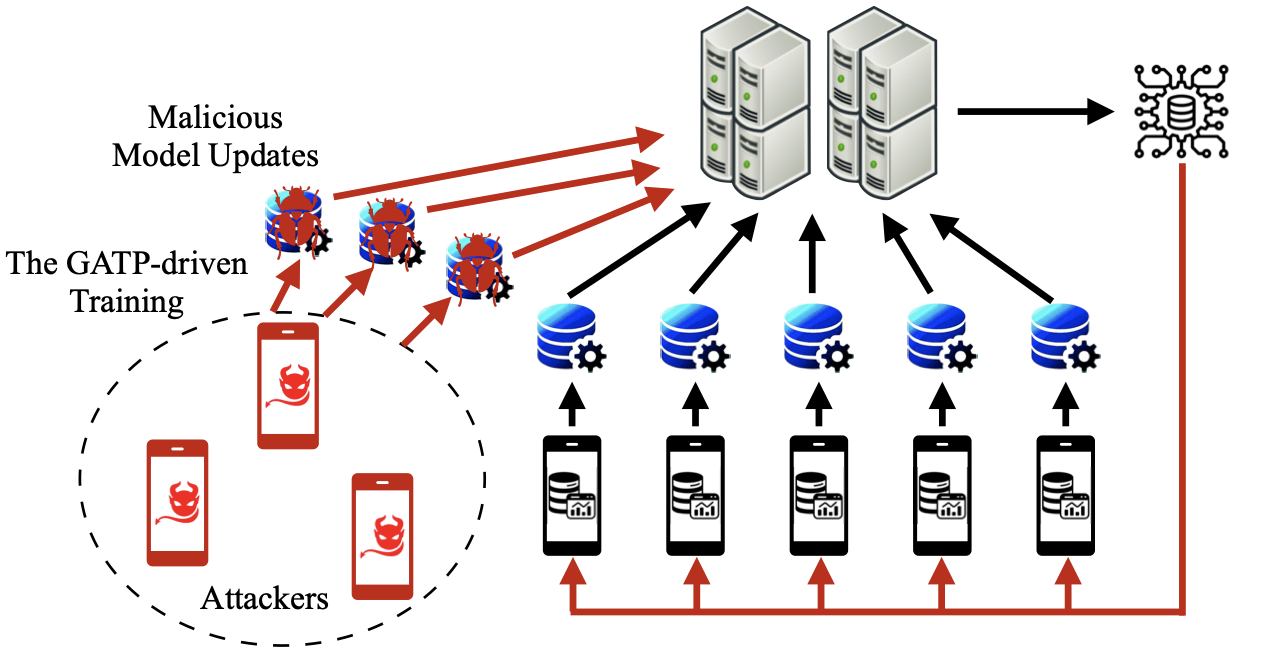
Fairness in Federated Learning (FL) is imperative not only for the ethical utilization of technology but also for ensuring that models provide accurate, equitable, and beneficial outcomes across varied user demographics and equipment. This paper proposes a new adversarial architecture, referred to as Adversarial Graph Attention Network (AGAT), which deliberately instigates fairness attacks with an aim to bias the learning process across the FL. The proposed AGAT is developed to synthesize malicious, biasing model updates, where the minimum of Kullback-Leibler (KL) divergence between the user's model update and the global model is maximized. Due to a limited set of labeled input-output biasing data samples, a surrogate model is created, which presents the behavior of a complex malicious model update. Moreover, a graph autoencoder (GAE) is designed within the AGAT architecture, which is trained together with sub-gradient descent to reconstruct manipulatively the correlations of the model updates, and maximize the reconstruction loss while keeping the malicious, biasing model updates undetectable. Kai Li, Jingjing Zheng, Wei Ni, Hailong Huang, Pietro Liò, Falko Dressler and Ozgur B. Akan, "Biasing Federated Learning with A New Adversarial Graph Attention Network," IEEE Transactions on Mobile Computing, vol. 24 (3), March 2025.
[DOI, BibTeX, PDF, More details]
Kai Li, Jingjing Zheng, Wei Ni, Hailong Huang, Pietro Liò, Falko Dressler and Ozgur B. Akan, "Biasing Federated Learning with A New Adversarial Graph Attention Network," IEEE Transactions on Mobile Computing, vol. 24 (3), March 2025.
[DOI, BibTeX, PDF, More details]
Load all older featured papers
Last modified: 2023-10-07

